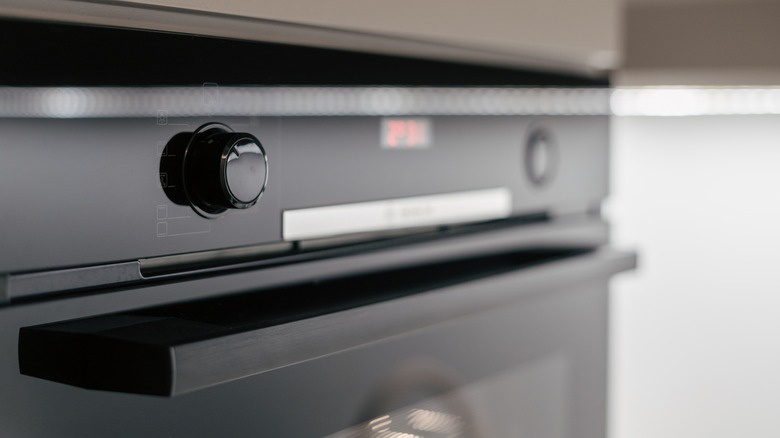Steam-Cleaning Or Self-Cleaning Ovens: Which Is Right For Your Kitchen
We may receive a commission on purchases made from links.
Cleaning your oven may not be the most exciting chore, but it is an essential part of maintaining a clean and healthy kitchen environment. Neglecting to regularly perform this task can lead to the growth of microbes, unpleasant odors, and extended cook times. Thankfully, someone invented self and steam-cleaning ovens to make the job a whole lot easier. We'll help you choose which one is best for your kitchen.
Both self-cleaning and steam-cleaning ovens use different internal processes to deep clean your oven, leaving behind some residue for you to easily wipe away. It requires a lot less elbow grease than scrubbing away all that burnt food debris by hand. You can also forgo using harsh chemicals to get the job done.
So, which oven is better for you? Well, that depends on what your needs are. If you frequently use your oven and require heavy cleaning, then the self-cleaning option is probably best as they are equipped to tackle stubborn caked-on messes. Steam-cleaning ovens are great for users who cook less often. Hence, they work best with frequent cleanings and for eliminating smaller messes.
How these ovens work
The self-cleaning oven uses extreme heat to peel residue and food chunks away from the surface. Your oven can get as hot as 800 degrees Fahrenheit in an effort to incinerate food waste. This mess gets fried to a crisp and turns into ash.
According to Whirlpool, this takes about an hour and a half to six hours to complete. It can also smell pretty bad so, you might want to open a window. Once your oven cools completely — it will stay locked until it comes down to a safe temperature — you just wipe the gunk off with a wet cloth.
A steam-clean oven uses water, which you pour into your unit, to create steam as the oven heats up. Temperatures hit about 400 degrees Fahrenheit during the cleaning cycle which can last between an hour to an hour and a half. When it's complete, the baked-on food mess in your oven has been softened enough so that you can easily wipe it away with a wet cloth.
Time and energy
Since steam-cleaning ovens use a heavy-duty cleaning process, you'll likely have to clean it less. KitchenAid recommends deep cleaning your oven at least once every three months with average use. However, this can vary depending on how often you use it and how dirty it gets. If you notice any visible grime or unpleasant odors, it's a clear sign that it's time to give your oven a thorough cleaning.
As steam-cleaning ovens only use water vapor to clean, this gentler process will likely require more frequent cleanings. On the upside, the cleaning cycles are much shorter. So, if you don't have six hours to kill while waiting for your oven cycle to finish, the steam cleaning option might be better for you. You may, however, have to follow up on the automatic process with a thorough hand cleaning if you want it to look pristine.
Steam-cleaning ovens also tend to be more energy efficient since they have a shorter clean time and use lower temperatures. If your kitchen isn't well-ventilated and you don't want to overwhelm your home with a noxious scent, this kind of oven might be your best bet. It doesn't give off a strong smell like a self-cleaning oven does, since it isn't burning away grime and is instead using water.


